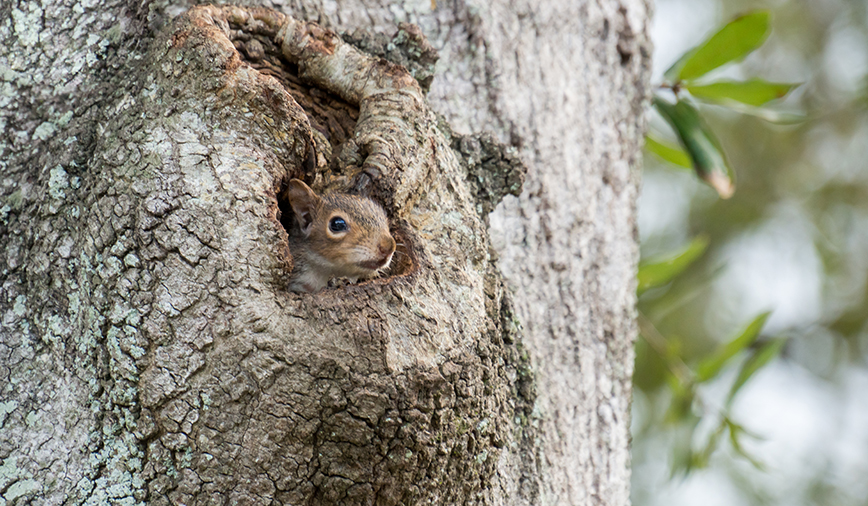February 14, 2014
Tree Cavities
“You have a cavity.”
For many of us, delivery of this statement evokes feelings of disappointment and maybe even gloom. Our dental hygiene regimen–all that brushing, flossing and rinsing–has somehow failed to keep the grungies from accumulating on our teeth, and now there’s a hole where healthy enamel once held fast.
The good news is that modern dentistry makes treatment of cavities virtually painless. A little topical anesthetic, the pressure of a needle and the numbing effect of novocaine all combine to make for a procedure that is not altogether unpleasant. (Now if only science could find a cure for dentists who ask us questions while we are reclined, open-mouthed and unable to answer with more than a wet gurgle…)
(Happy Dental Health Month, by the way.)
But enough about “bad” cavities. Today we’d like to spread the word about cavities that actually are good. Phenomenal, in fact. For they provide shelter and save lives.
We’re talking, of course, about tree cavities.
These dark hollows, created when branches drop or excavators like woodpeckers go to work, provide near-total protection from the elements for many local mammals and birds.
Sleety rain? No big deal when you’re inside a tree. Likewise for wind-driven snow. Even below-zero temperatures are moderated by the heat of warm bodies piled together and surrounded by layers of wood and bark.
Raccoons, opossums, flying squirrels, chickadees, nuthatches, woodpeckers and screech owls are just a few of our year-round species that take shelter inside tree cavities.
These handy holes are also proving useful for at least one other species, one that we typically associate only with summer: eastern bluebirds. A record number—88—were recorded in December during the Christmas Bird Count, and since then several people have told me about putting mealworms out this winter for the bluebirds that are coming to their birdfeeders.
Perhaps the bluebirds have found, as did their cousins the robins, that winter food sources are fairly abundant in Kane County. Lord knows we have no shortage of crabapples and berries, especially those on nonnative honeysuckle shrubs. Plentiful food is reason enough to forgo a taxing migration; add in a supply of sheltered roosts and the decision to stay here is a no-brainer.
Tree squirrels are another group of animals that take full advantage of tree cavities whenever possible. The bur oaks behind Hickory Knolls provide several such refuges, and all are currently in use. Red-bellied woodpeckers occupy one, a large honeybee colony is in another.
But none are in as high a demand as the one that overlooks our birdfeeding station. Situated 20 feet off the ground and 30 feet from the feeders, this hole is the Taj Mahal of tree cavities. It’s spacious enough to hold at least four chunky fox squirrels, shielding them from weather and predators alike. Several times a day we’ll look out to see the rotund rodents scampering out, one after another, like furry circus clowns streaming from a tall, vertical car.
What’s more, this cozy home has its own built-in security system. The entry point is only a few inches in diameter—large enough to admit the squirrels, yet small enough to prevent interlopers like opossums and raccoons from forcing their way in.
Useful as they are to wildlife, tree cavities also provide a valuable service to humans. The more hollow trees there are to provide homes for mammals and birds, the fewer animals there are living in attics, eaves, garages and sheds.
Years ago, folks used to fill holes in trees with cement, and sometimes brick and mortar. Not only did this practice deprive animals of homes, it also hastened the tree’s destruction by interrupting natural processes. And heaven help the arborist that would eventually have to take down that concrete-laden trunk.
These days, for the most part, people let the holes in their trees be. These are the sorts of cavities we want to encourage–no filling required.
Pam Otto is the manager of nature programs and interpretive services at the Hickory Knolls Discovery Center, a facility of the St. Charles Park District. She can be reached at 630-513-4346 or potto@stcparks.org.

